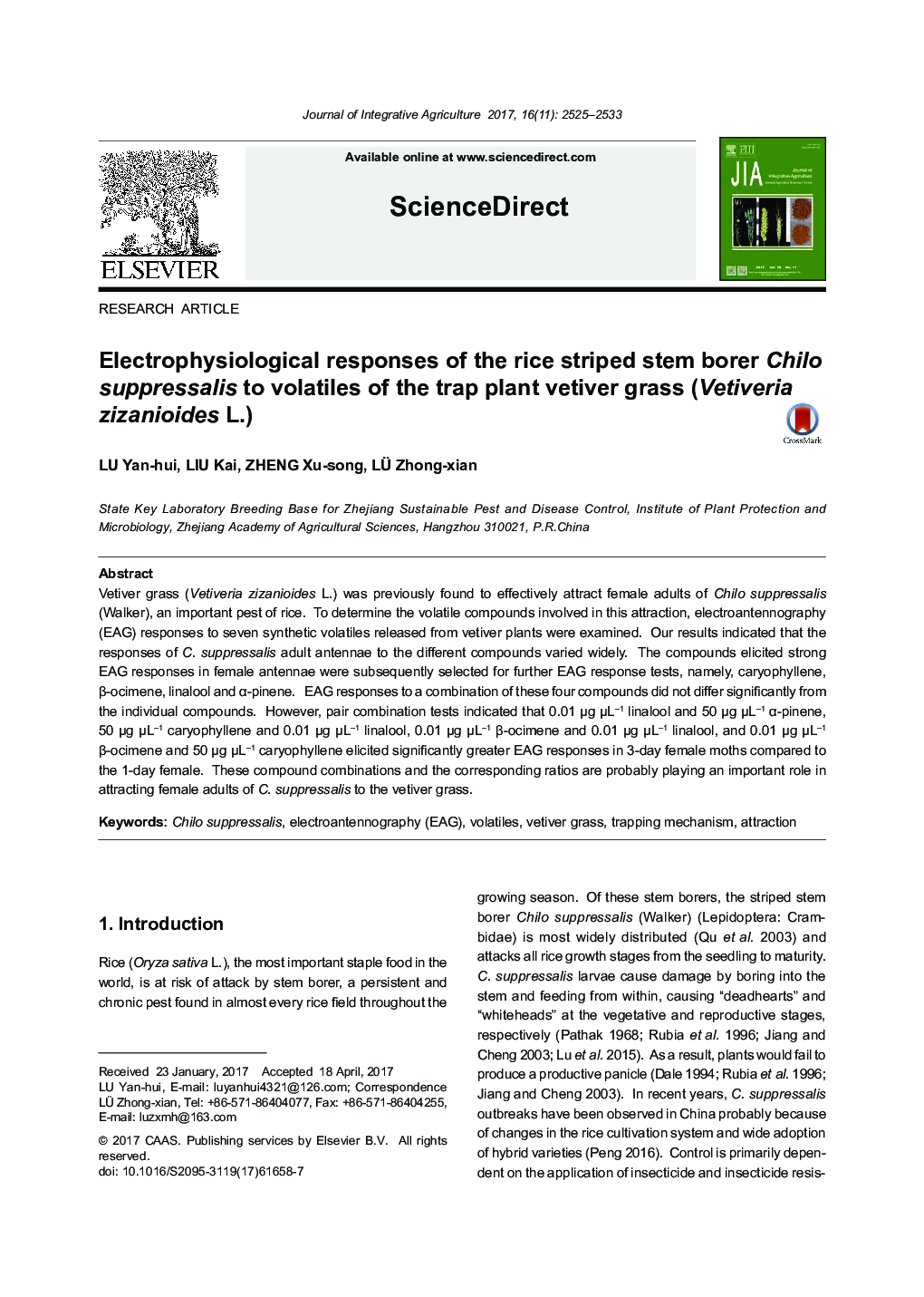| کد مقاله | کد نشریه | سال انتشار | مقاله انگلیسی | نسخه تمام متن |
|---|---|---|---|---|
| 8875802 | 1623703 | 2017 | 9 صفحه PDF | دانلود رایگان |
عنوان انگلیسی مقاله ISI
Electrophysiological responses of the rice striped stem borer Chilo suppressalis to volatiles of the trap plant vetiver grass (Vetiveria zizanioides L.)
دانلود مقاله + سفارش ترجمه
دانلود مقاله ISI انگلیسی
رایگان برای ایرانیان
کلمات کلیدی
موضوعات مرتبط
علوم زیستی و بیوفناوری
علوم کشاورزی و بیولوژیک
علوم کشاورزی و بیولوژیک (عمومی)
پیش نمایش صفحه اول مقاله

چکیده انگلیسی
Vetiver grass (Vetiveria zizanioides L.) was previously found to effectively attract female adults of Chilo suppressalis (Walker), an important pest of rice. To determine the volatile compounds involved in this attraction, electroantennography (EAG) responses to seven synthetic volatiles released from vetiver plants were examined. Our results indicated that the responses of C. suppressalis adult antennae to the different compounds varied widely. The compounds elicited strong EAG responses in female antennae were subsequently selected for further EAG response tests, namely, caryophyllene, β-ocimene, linalool and α-pinene. EAG responses to a combination of these four compounds did not differ significantly from the individual compounds. However, pair combination tests indicated that 0.01 μg μLâ1 linalool and 50 μg μLâ1 α-pinene, 50 μg μLâ1 caryophyllene and 0.01 μg μLâ1 linalool, 0.01 μg μLâ1 β-ocimene and 0.01 μg μLâ1 linalool, and 0.01 μg μLâ1 β-ocimene and 50 μg μLâ1 caryophyllene elicited significantly greater EAG responses in 3-day female moths compared to the 1-day female. These compound combinations and the corresponding ratios are probably playing an important role in attracting female adults of C. suppressalis to the vetiver grass.
ناشر
Database: Elsevier - ScienceDirect (ساینس دایرکت)
Journal: Journal of Integrative Agriculture - Volume 16, Issue 11, November 2017, Pages 2525-2533
Journal: Journal of Integrative Agriculture - Volume 16, Issue 11, November 2017, Pages 2525-2533
نویسندگان
Yan-hui LU, Kai LIU, Xu-song ZHENG, Zhong-xian LÃ,